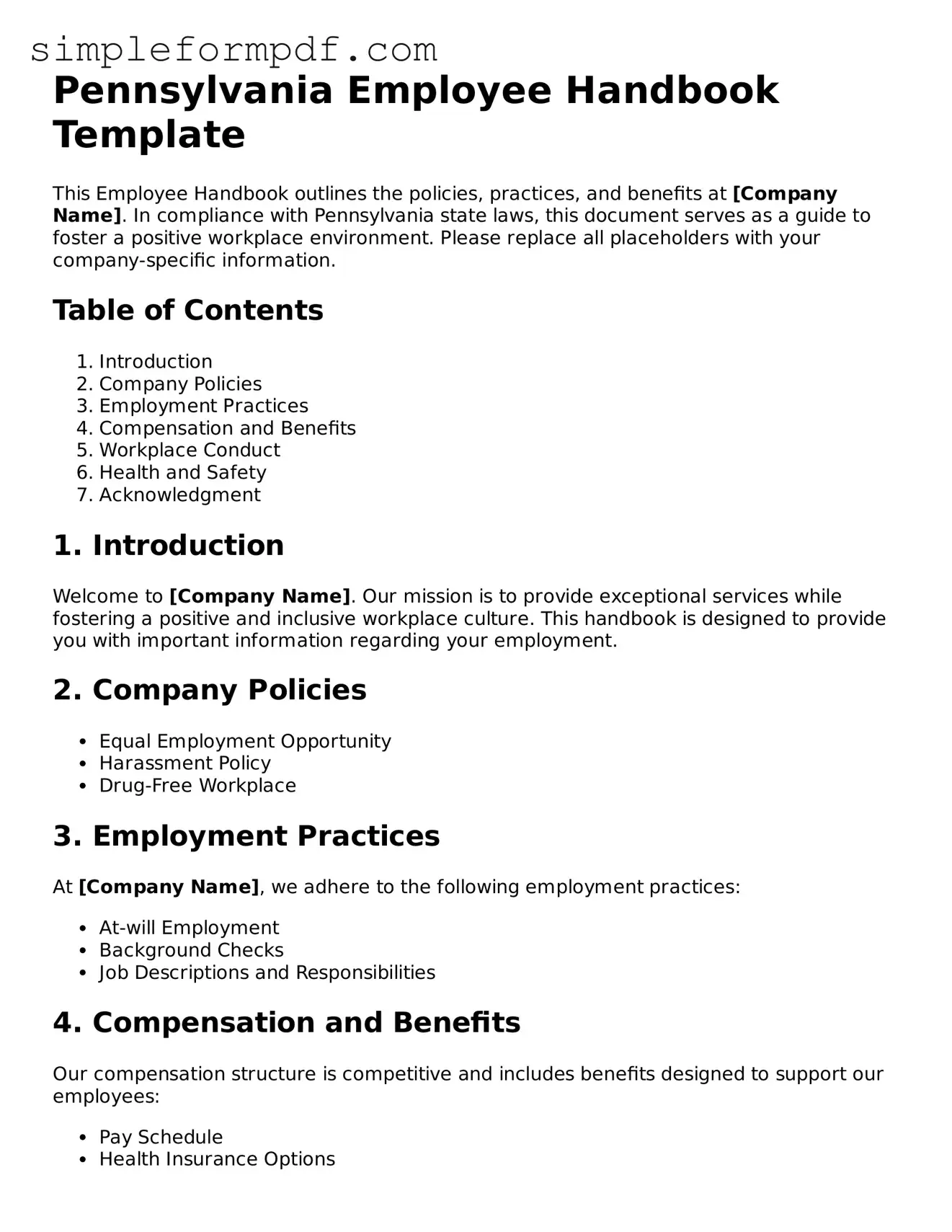Pennsylvania Employee Handbook Template
This Employee Handbook outlines the policies, practices, and benefits at [Company Name]. In compliance with Pennsylvania state laws, this document serves as a guide to foster a positive workplace environment. Please replace all placeholders with your company-specific information.
Table of Contents
- Introduction
- Company Policies
- Employment Practices
- Compensation and Benefits
- Workplace Conduct
- Health and Safety
- Acknowledgment
1. Introduction
Welcome to [Company Name]. Our mission is to provide exceptional services while fostering a positive and inclusive workplace culture. This handbook is designed to provide you with important information regarding your employment.
2. Company Policies
- Equal Employment Opportunity
- Harassment Policy
- Drug-Free Workplace
3. Employment Practices
At [Company Name], we adhere to the following employment practices:
- At-will Employment
- Background Checks
- Job Descriptions and Responsibilities
4. Compensation and Benefits
Our compensation structure is competitive and includes benefits designed to support our employees:
- Pay Schedule
- Health Insurance Options
- Retirement Plans
5. Workplace Conduct
All employees are expected to conduct themselves professionally. Standards include:
- Dress Code
- Attendance Policy
- Use of Company Property
6. Health and Safety
At [Company Name], we prioritize a safe work environment. Compliance with our health and safety policies is essential:
- Emergency Procedures
- Reporting Injuries
- Workplace Safety Guidelines
7. Acknowledgment
By signing below, you acknowledge that you have received and read the Employee Handbook. Please provide your name and signature:
Name: [Employee Name]
Signature: [Employee Signature]
Date: [Date]
